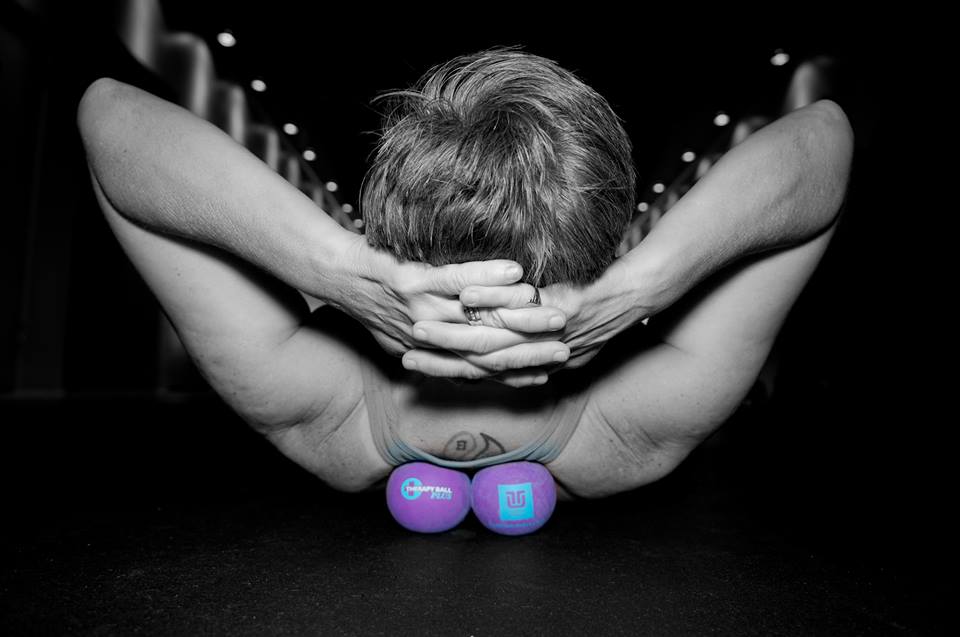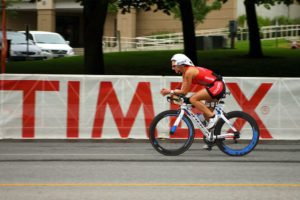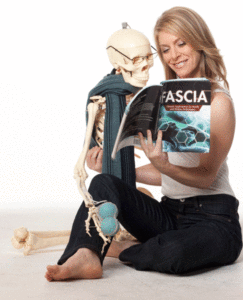
I call myself a “triathlon groupie.” I know many talented triathletes, and I can swim, bike, and run in my own right, but I tend to do each sport individually. Most recently, I’ve been on a bit of a cycling kick. And you better believe I brought my balls along for the ride. Not quite literally, of course, but since I met and fell in love with Yoga Tune Up® and The Roll Model® Method long before beginning any sort of relationship with road cycling, I know my therapy balls are always there for me when I need them. I roll around with various sized therapy balls every morning, and I would recommend some kind of similar general body maintenance to just about everyone, cyclists of any level included.

Whether you cycle or not, I hope you will read on as I try to convince you that it is worth the time and effort to establish a regular body maintenance program for yourself. I’ll even help you get started with a number of “greatest hit” techniques to try. Adopt these for your own regular upkeep routine, or let them be a starting point for finding the most effective exercises for you. The ultimate goal is to explore and get to know your own body.
First, consider the potential damage that not working on your body between rides (or other demands of life) can cause. To call out just a couple of common problematic areas, cyclists often have restricted thoracic mobility and/or hip mobility. And you know what? That probably describes most of the general population. Spending too much time in hip flexion and excessive spinal flexion, whether upon a bike saddle or slumped at a desk, and then doing nothing to counterbalance this posture can lead to fascial restrictions that play havoc with your back and entire body.
Fascia surrounds all of your muscles and internal organs, right down to the nerves and blood vessels. It’s a major player in every move you make and likely many injuries you’ve suffered from. Fascial lines run all through your body. Like a pull in the thread of a sweater, just one tight area or restriction can provoke a widespread one, causing pain and restricted blood flow. Fascial restrictions can cause issues in athletic endeavors as well as everyday life. Whatever the activity, limitations in the range of movement you have in any or all of your joints will result in lower performance and a greater risk of injury. Unless you do something about it.
Things like massage, stretching, moving frequently, and proper daily hydration are all important for maintaining healthy fascia. Self massage with Roll Model® Therapy Balls can aid in easing tightness and promoting recovery. One of the most effective ways to bring about change is to first “free” the tissue through massage or release techniques, and then stretch or work through range of motion. Yoga Tune Up® shines here. Almost by definition, Yoga Tune Up® is a combination of self massage and conscious movement to help us explore our individual biomechanics, discover body blind spots, and challenge our weaknesses and imbalances.
So let’s come up with a body maintenance game plan. We should address the thoracic spine and the hips since I went ahead called those out as potentially problematic areas for cyclists and anyone who sits. Knots and tight areas can also form around the quads, hamstrings, and calves, so we’ll hit those big movers of the legs on our greatest hits tour, too. Finally, we cannot neglect the upper body and shoulders. On a bike, you may not be actively using your upper body for much but to hold yourself up and steer, but for that precise reason it is important to keep it mobile, too. Remaining statically hunched over the handlebars (or desk) can leave the chest and front of the shoulders tight and stiff.
We’ll set off on our greatest hits tour of body maintenance moves next time. Join me then, and bring your balls! (https://chipedge.com)













The remainder to counterbalance is very important, no matter what you’ve been doing all day, our body needs to realign. I also don’t cycle so it was nice to hear what may be tight and the reason why with something that all people do which is sit around at one point throughout the day.
This is a great read for athletes of all types. I love how you pointed out that while you are not actively using your upper body while cycling, it still requires a degree of mobility. I only recently began riding my bike again and was definitely very sore in the upper body after my first few rides.
In my 200 hour training, we learned to first stretch or release an area before strengthening it. I love the concept of using therapy balls to release an area, especially those hard to reach areas that you can’t get on your own, and then discovering the area’s range of motion and ability to perform. I’ve experienced it myself, and am a believer!
I agree with you that maintenance is key and a standard yoga practice is just not enough. I like how you succinctly describe what the Yoga Tune Up method is.
Recently i had to sacrifice my yoga practice for almost 10 days as i had to do some urgent paper work. So every day i would sit at the desk spending around 5-6 in a deep hip flexion and excessive spinal flexion. Pretty soon my body start complaining so i only could make it happen with the help of self-massage breaks ,you only need two roll balls and you can do it against the wall or in half corpse pose on the floor: place balls between C7 and Scapula Superior Angles and you’ll start with Levator Scapula ,rolling down along the Trapezious, across fibers of the Romboids. It helps me it to relieve the pain and tension in upper back muscle.
I loved your analogy of a “pull in the thread of a sweater,” as it is such a great visual metaphor and easy to understand. Thank you!
I have found that maintenance to be key to my return to sport. I don’t leave home with out my balls. I actually have a set in each athletic bag. My kids laugh at me but who will be laughing when I am 80 and running circles around them.
Maintenance is just a big part of being able to do the activities that you want to do. I like the fact about having a regular routine. My balls travel with me everywhere.